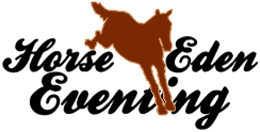I've had a few people request an art tutorial, so I decided to make one. Please bear with me as I have never made a tutorial before, but I'll do my best to explain everything.
---
First off, I used Clip Studio Pro with a Wacom Intuos. I have also used this method in Photoshop when I had the free trial so I know it works there. However, I'm not sure about other programs.
---
Note: As you read through this tutorial keep in mind that each step is done on a different layer, this is to make it easier to fix any mess-ups or whatever. Also, I do not have a specific method for choosing colors, I just use the color wheel until I find a color that I think will work best for the piece.
---
Part One: Basics
Step One:
This is probably the most obvious step. I use a 7px brush for this part, but the brush size will vary depending on your canvas size, I use 1200x1000. Select your base color and paint the shape that you want for the hair. This can arguably be one of the hardest parts about doing hair because it can take a few tries to finally get the shape that you want.

Step Two:
For this step, you're going to decrease the size of your brush to 2.5px (again, this may vary based on canvas size). Use the same color that you used for the base color and draw some flyaway hairs to give it more movement and shape.

Step Three:
Use a 7px brush for this step. Pick a color that is darker than the base color, but not too dark. Create some wavy lines to follow the movement of the hair, then use gaussian blur (about 4.5 for the value).

Step Four:
In this step, we're going back to a 2.5px brush. Choose a color that is lighter than the base, and again, draw some wavy lines to match up with the shape of the hair.

Step Five:
Now take an even light color and repeat the last step, only this time, only fill in gaps in between the lines that you did in the last step.

That's all the colors I have for this particular hair, however, some pieces may need more colors.
---
Now that we've completed the basics, let's move on to lighting.
---
Part Two: Lighting
Step One:
In this step, I used a hue/saturation correction layer and darkened the color of the hair. This step may not be necessary.

Step Two:
Take a soft airbrush and paint some lowlights/shadows with pitch black. Then blur it and lower capacity.


Step Three:
Once again use an airbrush, this time with white to add some highlights. Blur, then change the layer mode to overlay and set to 50% opacity.


Step Four:
Add more shadows and highlights. This is possibly one of the most important steps when it comes to lighting. You’re going to cover all the hair with white and black to change the lighting of it. Once you’re done painting them, change the layer to soft light with 60% opacity.

Step Five:
This step may not be necessary for some pieces, but I took a small airbrush and traced alongside the head of the horse to add a shadow on the hair to give it more depth. It is on soft light at 65%.

Step Six:
More highlights! Take your airbrush again and add more highlights. Blur and/or smudge this layer to make it look a little better. Change the layer mode to overlay and 60% opacity.


Step 7:
Alright, final step here, which is another one that may or may not be necessary based on your piece. For this step, I used a bright/contrast correction layer to darken the hair because it was way too bright for the background.

---
That's everything! I hope I explained it alright, I'm not the best at this kind of stuff. Let me know if you have any questions, I will try to answer them to the best of my ability.


